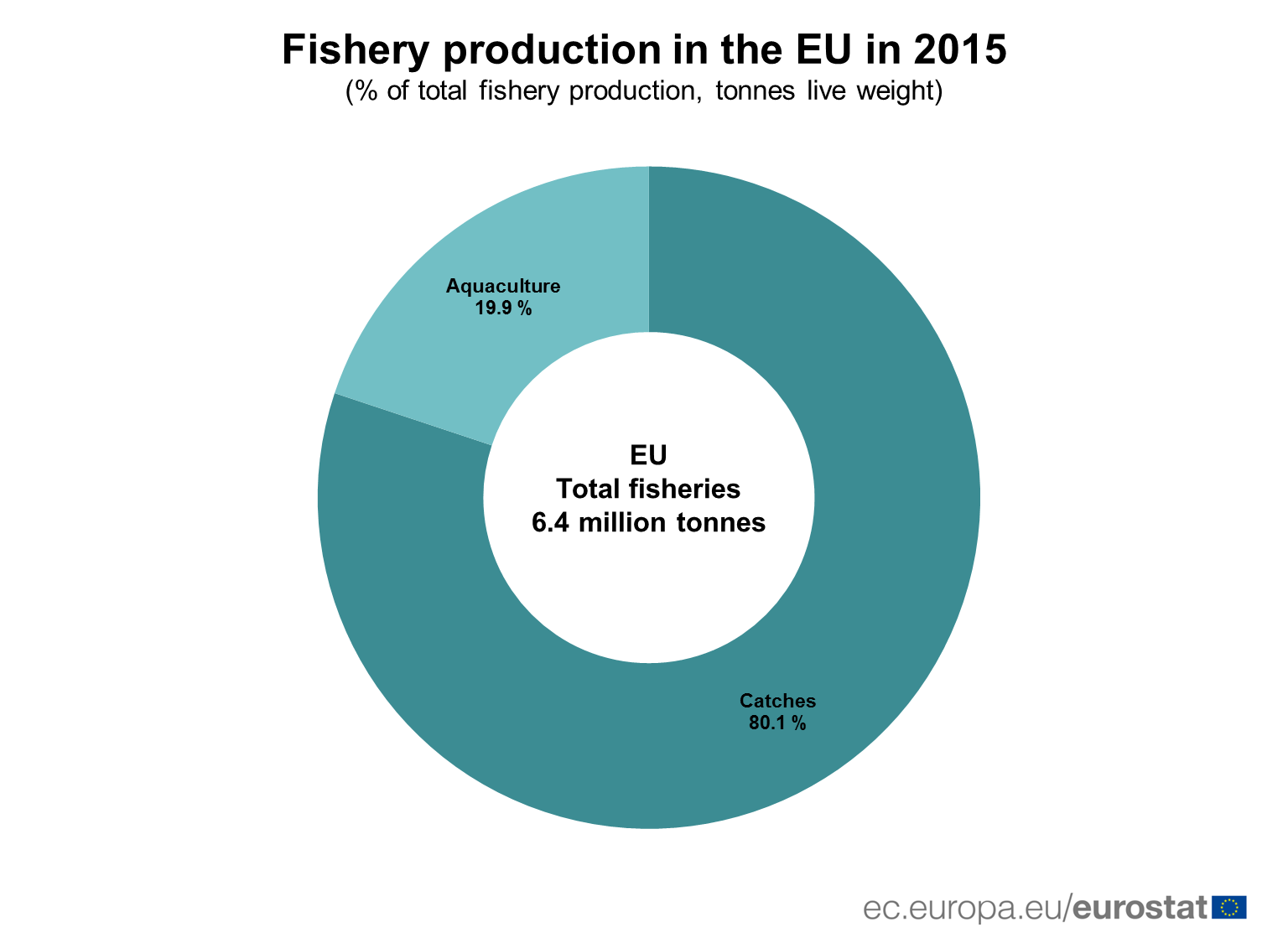Aquaculture refers to the farming of aquatic (freshwater or saltwater) organisms such as finfish, molluscs, crustaceans and algae. Aquaculture statistics complement the data on the capture of wild fish available from fish catch statistics.
The European Union's aquaculture industry was worth €4 billion in 2015. Aquaculture production in the EU amounted to 1.3 million tonnes, 19.9% of the EU's total fishery production.
The fisheries sector employed 39 000 persons (28%) in aquaculture and 102 000 (72%) in the capture fisheries.
Five Member States generate 75% of the EU production
In 2015, Spain (294 000 tonnes, or 23.0% of the EU total), the United Kingdom (212 000 tonnes, 16.6%) and France (180 000 tonnes, 14.1%) were responsible for over half of the EU aquaculture production. Other major producing Member States were Italy (149 000 tonnes, 11.6%) and Greece (106 000 tonnes, 8.3%).
The ranking changes when expressed in terms of economic value generated. In 2015, the United Kingdom led, generating a 24.1% share (€995 million), ahead of France (€627 million, 15.2%), Spain (€513 million, 12.4%), Greece (€463 million, 11.2%) and Italy (€437 million, 10.6%). Overall, around three quarters of the EU aquaculture market in terms of both volume and value was generated by just five Member States.
The EU accounted for 1.2% of the worldwide aquaculture production weight in 2015 and for 2.8% in terms of value.
Ten species accounted for 90% of EU production
Finfish and molluscs made up 98.2% of all aquaculture production (in weight) in the EU, meaning that the production of crustaceans, algae and other organisms was very small. Although a large number of species (more than 130) were cultivated in the EU, the three most common species - Mediterranean mussel, Atlantic salmon and rainbow trout – covered around half of the total production weight (54%) and were responsible for over 40% of the value. The ten most common species covered 90% of the production weight and 87% of the value.
Atlantic salmon accounted for a quarter of the overall value (24.4%) of the sector, although it was second in terms of volume (15.1%). On the other hand, the Mediterranean mussel was the main species in terms of volume (25.1%), but lagged far behind in value (4.8%).
Aquaculture is a highly specialised sector, strongly influenced by the geography of the countries and the natural habitat of the species. As such, the United Kingdom was the main producer of Atlantic salmon (95% of the total EU production in 2014) and Greece produced 59% of the total EU production of seabream as well as 51% of all European seabass, while Spain was the leading EU producer of Mediterranean mussels (70%) and France of Pacific oysters (87%).
See the dedicated Statistics Explained article for further information.




